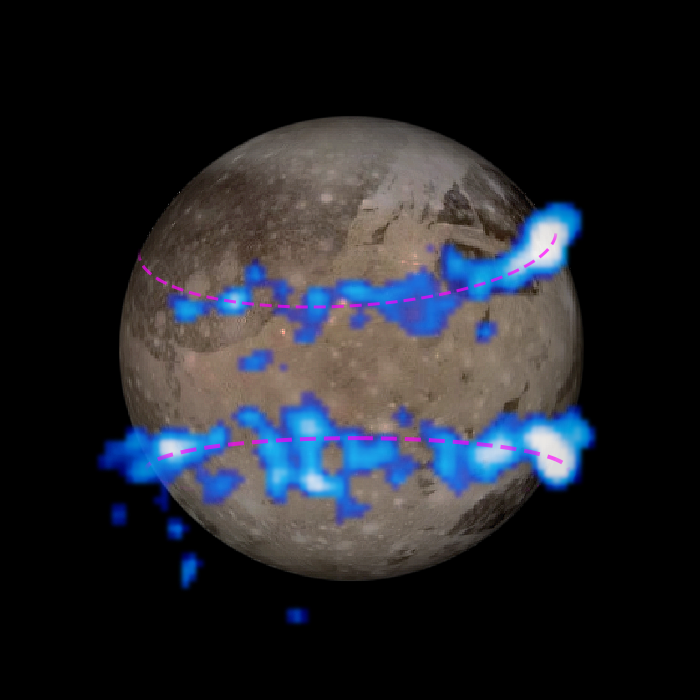Underground extraterrestrial oceans are one of the astronomical community’s staple points of speculation; from the lakes beneath Jupiter’s moon Europa, to those beneath Saturn’s Enceladus, the latest contender to join the subterranean ocean category is Ganymede, Jupiter’s largest moon. Thanks to a recent discovery made by NASA’s Hubble Space Telescope, we now have the best evidence yet for the existence of underground saltwater ocean beneath Ganymede’s crust.
“This discovery marks a significant milestone, highlighting what only Hubble can accomplish,” said John Grunsfeld, associate administrator of NASA’s Science Mission Directorate at NASA Headquarters, Washington. “In its 25 years in orbit, Hubble has made many scientific discoveries in our own solar system. A deep ocean under the icy crust of Ganymede opens up further exciting possibilities for life beyond Earth.”

Ganymede, is not only Jupiter’s largest moon, but the largest moon in our entire solar system. It is thought to harbor more water than all the water on Earth’s surface, featuring an estimated depth of up to 60 miles (100 km) that’s situated beneath a crust 95 miles (150 km) thick, made up mostly of ice.
While the underground ocean theory was initially presented in the 1970s, the first shred of tangible evidence only surfaced in 2002 when NASA’s Galileo mission first measured Ganymede’s magnetic field. Unlike all the other moons in the solar system, Ganymede is only one to possess a magnetic field, which in turn, propagates the existence of colorful ribbons of hot electrified gas in the atmosphere above its north and south poles called aurorae, similar to the aurorae borealis here on Earth.
Similarly, Ganymede’s proximity to Jupiter causes its magnetic field to become intertwined with that of Jupiter’s, and as a result, when Jupiter’s magnetic field changes, the aurorae on Ganymede exhibit a back and forth “rocking” movement. Theoretically, if a saltwater ocean were present, then Jupiter’s magnetic would create a secondary magnetic field in the ocean to counter the rocking aurorae, reducing the rocking to meager 2 degrees.
Unfortunately, the data produced by Galileo in 2002 consisted of snapshots taken at 20-minute intervals, a period too brief to observe the cyclical movement of the ocean’s secondary magnetic field and determine the effect of the magnetic friction on the rocking.

Fast forward to 2015, and the data captured by Hubble paints a completely different picture. By screening Ganymede through ultraviolet light, Hubble was able to obtain images of the aurorae rocking in real-time, and precisely measure the degree of movement, concluding that its behavior was consistent with the presence of a subsurface saltwater ocean.
Source: NASA
Advertisement
Learn more about Electronic Products Magazine





